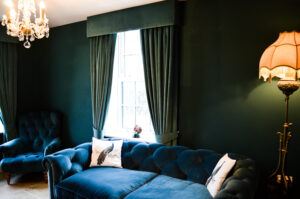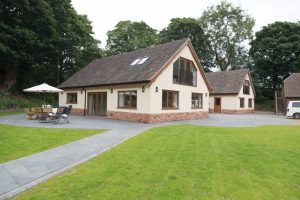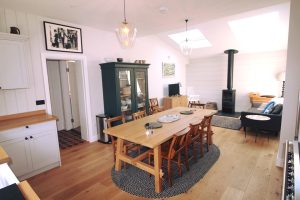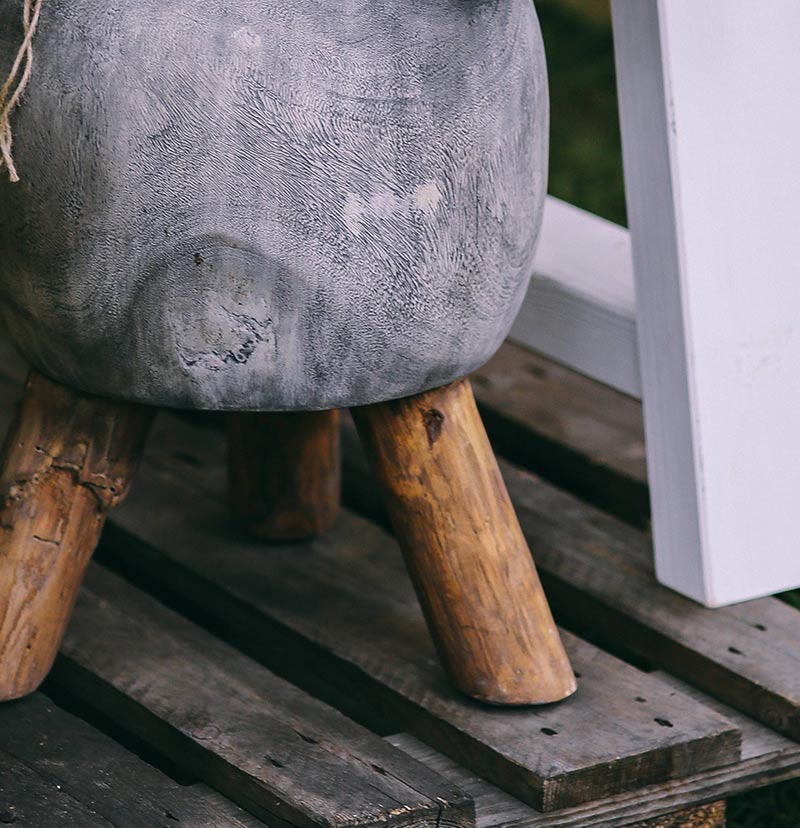
Things to Consider Before Renovating an Old Property
Purchasing a period property to restore and renovate it to create something new entirely is a passion project that many people dream of undertaking. But renovating an old property is not as simple as it sounds.
While scrolling through Instagram or TikTok, you’ve probably come across a fair amount of period property renovations, showing you the before shots of an old, dated and weathered property, and then the after shots – that same property restored and turned into a glorious home with a modern touch.
Yet, how much do you really know about restoring historical homes? Take it from our local construction company in Norfolk, period home renovation is a huge responsibility.
Bespoke Norfolk Group in Kings Lynn has undertaken multiple projects of this kind, and so we want to share with you the things you should consider before renovating an old property.
What Does it Mean to Renovate an Old Property?
Renovating an old property is discussed in many different ways. Some refer to a project like this as a sympathetic renovation – with this type of renovation, you’re restoring the old home as close to its original state as possible.

You could also refer to this type of project as a period home renovation. A period home means that the property was built during a specific time period, such as Victorian.
Given these properties often have rich histories, they can also be referred to as historic homes. Usually, a home will be listed as “historic” by an official body.
What these types of renovations have in common is that the property that is planned to be renovated is old and outdated, and often uninhabited as a result. To renovate these homes is to make them habitable once again.
You Need the Correct Permissions
Renovating an old property isn’t just hard graft. There are multiple hoops to jump through, so to speak, in the form of permissions.
There is the usual planning permission in place. But with older properties, they are more difficult to work on than newly built homes. Think about it this way: most period homes could be anywhere from 100-200 years old, meaning they’re extremely delicate.

It’s not just their age you have to consider but also the fact that they may have been renovated, or at least worked on, a number of times before.
As for adhering to the correct permissions, before starting any work, you should contact your local authority to ensure you’re not missing anything.
Is the Property Listed?
A listed building has been deemed to be of special architectural or historical interest. Therefore it is considered to be of national importance which means it will be protected.
As you can imagine, if the old property you’re planning to renovate is listed, that makes it harder for you.

Listed buildings are ranked in three categories:
- Grade I listed
- Grade II* listed
- Grade II listed
Most listed buildings are Grade II listed. So if you want to renovate your Grade II listed property, you will need to apply for listed building consent. Moving forward with your old house renovation without listing consent (if needed) is a criminal offence.
Other Permissions and Considerations for Period House Renovation
- Conservation areas – When a local planning authority identifies an area of special architectural or historic interest, a conservation area may be created. Properties found within these areas come with additional rules for home construction.
- Permitted development rights – If your period property isn’t listed or in a conservation area, you may be able to renovate a historic property without planning permission.
- Party wall act – Before starting an old house renovation, you may need to serve your neighbours notice if your property is linked to or close by to theirs.
- Building Regulations – These regulations set the standards for how the building should be constructed, renovated, extended, or designed.
Health of the Property
Before getting started on your sympathetic renovation, you need to know what you’re working with. Or, in other words, what state the property is in before renovation.
Being fully aware of the current state of the property will make it more likely that your project will be a success. That’s why it is recommended that you include a cost for a house survey in your budget.

As Norfolk construction experts, we recommend hiring a building surveyor. This will allow you to create a checklist of what needs doing and in what order. What you must remember with restoring historical homes is that things like central heating systems and electrics could be outdated, deeming them unsafe and non-negotiable to update.
By planning ahead you can also save money and budget accordingly. The fewer hidden surprises you encounter on your period home renovation journey, the better.
As well as possible issues with the home’s heating system and electrics, you should also be on the lookout for:
- Mould
- Mildew
- Asbestos
- Damages
- Cracks
- Plumbing faults
Establish Your Goals and How You’re Going to Achieve Them
As part of your planning phase, it’s important to identify your goals and plan your budget before any building work takes place.
Renovating to Live in Vs Renovating to Sell
Renovating a historic home is not a small decision, and people have different reasons for wanting to take on this project. For some, their dream is to live in a lovingly restored period property. And for others, they’re renovating an older home as an investment to sell or rent it out later down the line.
At our Norfolk-based construction company, we’ve come across many different reasons for renovating a historic property.

If you’ve got to the stage where you’ve decided to begin this process, you likely have a clear idea of what your end goal is with the property, and it’s great that you do.
Because going forward, you can make important decisions based on your desires. For example, if you know this old home, once restored, is going to be your forever home, you will know what design, layout and style to aim for with your renovation.
And if you’re buying an old house to renovate and then sell, you can allocate some time to doing your research – find out what buyers who are interested in period properties want, such as a home that has preserved its stunning old home features (more on that later).
Doing it Yourself or Contracting the Work?
A job such as this isn’t cheap, and so in a bid to save funds, hopeful renovators have decided to add a touch of DIY to their period house renovation projects.
It certainly is a good tactic to keep hold of your budget. But there are some things that you should leave to the pros. With that being said, there are plenty of small tasks that you can do yourself in your sympathetic renovation.
Such tasks as painting and decorating, installing cabinetry, and interior designing.
As for the bulk of the work, it’s best to reach out to a professional construction company near you to help you out.

Reach out to our local construction company in Norfolk >
With many residential construction companies, they will offer a design and build service that offers architectural services alongside building work. This is a hidden key to making restoring historical homes easier and faster.
With all of the different things to consider when renovating a historic property, utilising the skill, experience and resources of a construction company makes the whole project a lot smoother.
Use an Architect for Your Old House Renovation
There are many different types of architects, and one among them is a conservation architect. These architects specialise in the architecture of old period homes, and restoring them to their full potential, which makes them great for sympathetic renovation projects.
Even if you can’t get a hold of a conservation architect, there are still plenty of local architects available for you to work with. And if they have experience in designing sympathetic renovations, that’s even better.

Through working with an architect, your goal is to receive detailed drawings, specifications and plans for your chosen contractor to work from.
Here at Bespoke Norfolk Group, what makes us trusted Norfolk construction experts is the fact we partner and work with incredible local architects, creating a strong relationship and establishing trust with them.
When you have detailed designs to work from that are full of concrete decisions and in-depth plans, it creates a great working relationship between you, your architect and contractor, which then provides a sturdy foundation for all of you to work on.
Celebrate the History of an Old Property
One of the main reasons people wish to renovate an old property is to celebrate its history. That’s usually the driving factor behind a person choosing to take on a sympathetic renovation of an older property, as opposed to opting for a new build.
Period homes – no matter their state – have something that a new build property lacks and that is character.

Victorian fireplaces, wall panelling, stained glass, and rustic wood flooring are a few examples of the period features we all love. Preserving old home features such as these is part of the joy of renovating an old property.
When you choose to renovate an old property with sympathy, it doesn’t mean that you have to restore the property to exactly how it was before. You can put your own spin on it, like many have done.
The key is to blend the historical charm of a period property with modern elements to create something new entirely.
Check out this Norfolk construction project where we renovated a Railway Station House >
Here are some ways you can revitalise a historical home while also keeping all of the character.
Introduce Natural Light
It’s true that some period homes can be poorly lit and even appear dull at times. To remedy this, install roof lights and bi-fold doors to introduce more natural light.
Change Up the Layout
You don’t want to go too overboard with this idea, as disturbing the original layout could take away some of the original home’s charm, but by changing the layout slightly and utilising all areas of the home, you can make it your own.
Introduce Modern Elements
Just because it’s an older property, it doesn’t mean it can’t be modern. Add modern amenities – as well as preserving old home features – to your home to make living in your renovated home work for you.
Expect the Unexpected
Finally, we wanted to remind you that period home renovation is a tricky project due to many factors, some of which we have discussed above.
It’s important to expect the unexpected and to plan accordingly. That means retaining a percentage of your budget in the case of any pitfalls, listening to the advice of professionals and experts, and understanding this is a process that can’t be rushed.
If you’re in Norfolk and need the help of an expert to help you restore a historical home while preserving old home features, you can contact our team at Bespoke Norfolk Group in Kings Lynn. We offer a wide variety of Norfolk construction services that may help you achieve your home lifestyle dreams.






